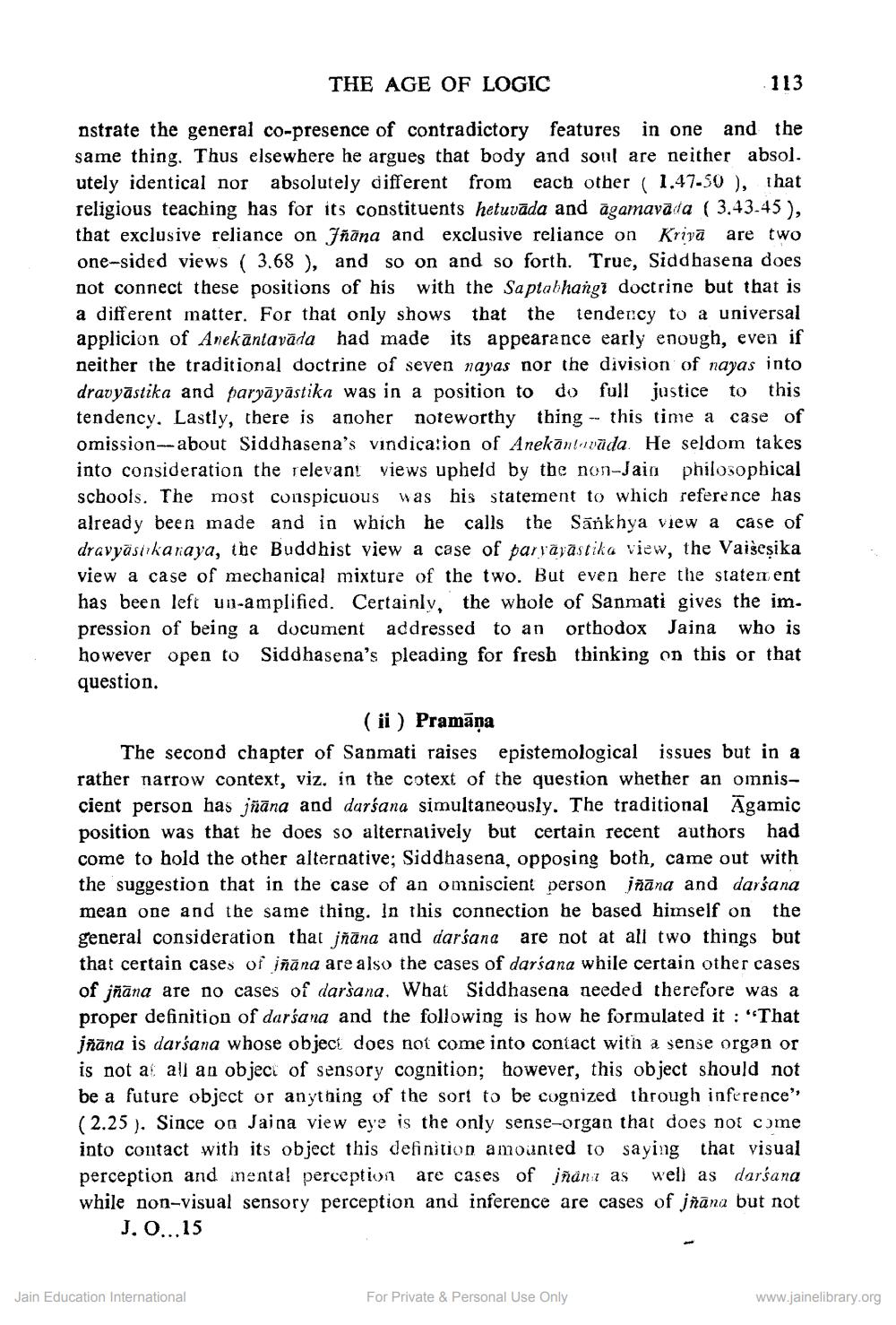________________
THE AGE OF LOGIC
113
nstrate the general co-presence of contradictory features in one and the same thing. Thus elsewhere he argues that body and soul are neither absol. utely identical nor absolutely different from each other ( 1.47-50 ), that religious teaching has for its constituents hetuvada and agamavāda (3.43-45), that exclusive reliance on Jñana and exclusive reliance on Krivā are two one-sided views (3.68 ), and so on and so forth. True, Siddhasena does not connect these positions of his with the Saptabhangi doctrine but that is a different matter. For that only shows that the tendency to a universal applicion of Anekāntavāda had made its appearance early enough, even if neither the traditional doctrine of seven nayas nor the division of nayas into dravyāstika and paryāyāstika was in a position to do full justice to this tendency. Lastly, there is anoher noteworthy thing this time a case of omission-about Siddhasena's vindication of Anekant väda. He seldom takes into consideration the relevant views upheld by the non-Jain philosophical schools. The most conspicuous was his statement to which reference has already been made and in which he calls the Sankhya view a case of dravyasikanaya, the Buddhist view a case of paryayastika view, the Vaišeṣika view a case of mechanical mixture of the two. But even here the statement has been left un-amplified. Certainly, the whole of Sanmati gives the impression of being a document addressed to an orthodox Jaina who is however open to Siddhasena's pleading for fresh thinking on this or that question.
(ii) Pramāņa
The second chapter of Sanmati raises epistemological issues but in a rather narrow context, viz. in the cotext of the question whether an omniscient person has jñāna and darśana simultaneously. The traditional Agamic position was that he does so alternatively but certain recent authors had come to hold the other alternative; Siddhasena, opposing both, came out with the suggestion that in the case of an omniscient person jñāna and darsana mean one and the same thing. In this connection he based himself on the general consideration that jñana and darśana are not at all two things but that certain cases of iñana are also the cases of darsana while certain other cases of jñāna are no cases of darsana. What Siddhasena needed therefore was a proper definition of darsana and the following is how he formulated it: "That jñāna is darśana whose object does not come into contact with a sense organ or is not at all an object of sensory cognition; however, this object should not be a future object or anything of the sort to be cognized through inference" (2.25). Since on Jaina view eye is the only sense-organ that does not come into contact with its object this definition amounted to saying that visual perception and mental perception are cases of jñana as well as darśana while non-visual sensory perception and inference are cases of jñāna but not J. O...15
Jain Education International
For Private & Personal Use Only
www.jainelibrary.org




